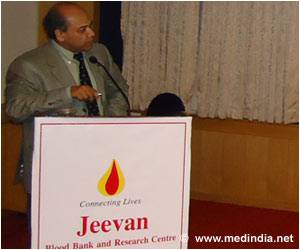- A new strategy has been developed that utilizes induced pluripotent stem (iPS) cells, which can be reprogrammed to produce healthy uterine cells
- These healthy uterine cells can replace the diseased endometrial tissue, thereby providing a way to treat endometriosis
- This cell-based therapy approach could be used in the future to bioengineer a whole uterus, which will be capable of preventing various uterine diseases, including endometriosis
The study, published in Stem Cell Reports, an online publication of Cell Press, was led by Dr. Serdar Bulun, MD, Chair of Obstetrics and Gynecology, Feinberg School of Medicine, Northwestern University, Chicago, Illinois, USA. The team also included Dr. Kaoru Miyazaki from Northwestern University and Dr. Tetsuo Maruyama from Keio University, Tokyo, Japan.
Read More..
What are Stem Cells?
Stem cells are cells in the body that have the ability to develop into specialized cells. These cells can replace cells and tissues that have been damaged or lost due to disease. Stem cells are of three types:- Embryonic Stem Cells: These cells supply new cells to the growing embryo, as it develops into a fetus. These cells are pluripotent and have the ability to differentiate into any cell type.
- Adult Stem Cells: These cells supply new cells as an organism grows and replaces cells that may be damaged. These cells are multipotent and can only differentiate into a specific cell type.
- Induced Pluripotent Stem (iPS) Cells: These stem cells are engineered in the lab by taking adult stem cells such as skin or blood cells and inducing or reprogramming them to differentiate into other cells. iPS cells, like embryonic stem cells, are pluripotent i.e. they have the capacity to differentiate into any cell type. In the present study, iPS cells have been used.
What is Endometriosis?
Endometriosis is a disease in which tissues that normally line the inner layer of the uterus (endometrium) grows outside the uterus on other pelvic organs, such as the ovaries or Fallopian tubes. These tissues thicken and bleed, just like the endometrium during the menstrual cycle. Common symptoms of endometriosis include pain, abnormal periods, and infertility. This chronic gynecological disorder affects approximately 10 percent women of reproductive age worldwide. This amounts to approximately 200 million cases. There is no effective long-term treatment for endometriosis and it can sometimes lead to ovarian cancer.Why is the Study a Major Breakthrough?
This study has shed new light on how to go about treating endometriosis by replacing the diseased endometrial cells with healthy cells, derived from the woman’s own blood or skin.Dr. Serdar Bulun, who has over 25 years of experience in developing new treatments for endometriosis and also the senior author of the study, said: “This is huge. We’ve opened the door to treating endometriosis.” He added: “These women with endometriosis start suffering from the disease at a very early age, so we end up seeing young high school girls getting addicted to opioids, which totally destroys their academic potential and social lives.”
What is the Impact of the Study on Endometriosis?
In endometriosis, the endometrial cells do not respond to a hormone called progesterone, which is required for implantation of the fertilized ovum in the uterus. As a result, these defective endometrial stromal fibroblasts travel through the Fallopian tubes and then onto the ovaries and other adjacent tissues in the lower abdomen.Dr. Bulun said: “Now that this study has demonstrated that these cells can be reproduced and respond properly to progesterone, the next step would be to replace the diseased cells in the uterus with these newly programmed, healthy uterine cells.”
With rapid improvements in cell-based therapy techniques, it will be possible to replace the defective cells that cause pain and inflammation within the uterus, with normal uterine cells, resulting in alleviation of these symptoms. Importantly, the newly generated endometrial tissue will be more conducive for implantation.
Expert Opinion
Dr. Bulun is optimistic that in the future it may be possible to generate a whole uterus by this cell-based therapeutic approach, using the patient’s own iPS cells.However, Dr. Bulun cautions: “Uterine transplantation has been tried, but the biggest obstacle to success has been the rejection of someone else’s uterus with the patient’s immune response. This problem could be solved if a whole uterus can be bioengineered by populating a scaffold with the patient’s own iPS cells reprogrammed to form a uterus. However, this is a long shot.”
Funding Source
The study was funded by the National Institutes of Health’s Eunice Kennedy Shriver National Institute of Child Health and Human Development, Rockville, MD, USA.Reference:
- Generation of Progesterone-Responsive Endometrial Stromal Fibroblasts from Human Induced Pluripotent Stem Cells: Role of the WNT/CTNNB1 Pathway - https://doi.org/10.1016/j.stemcr.2018.10.002
Source-Medindia















